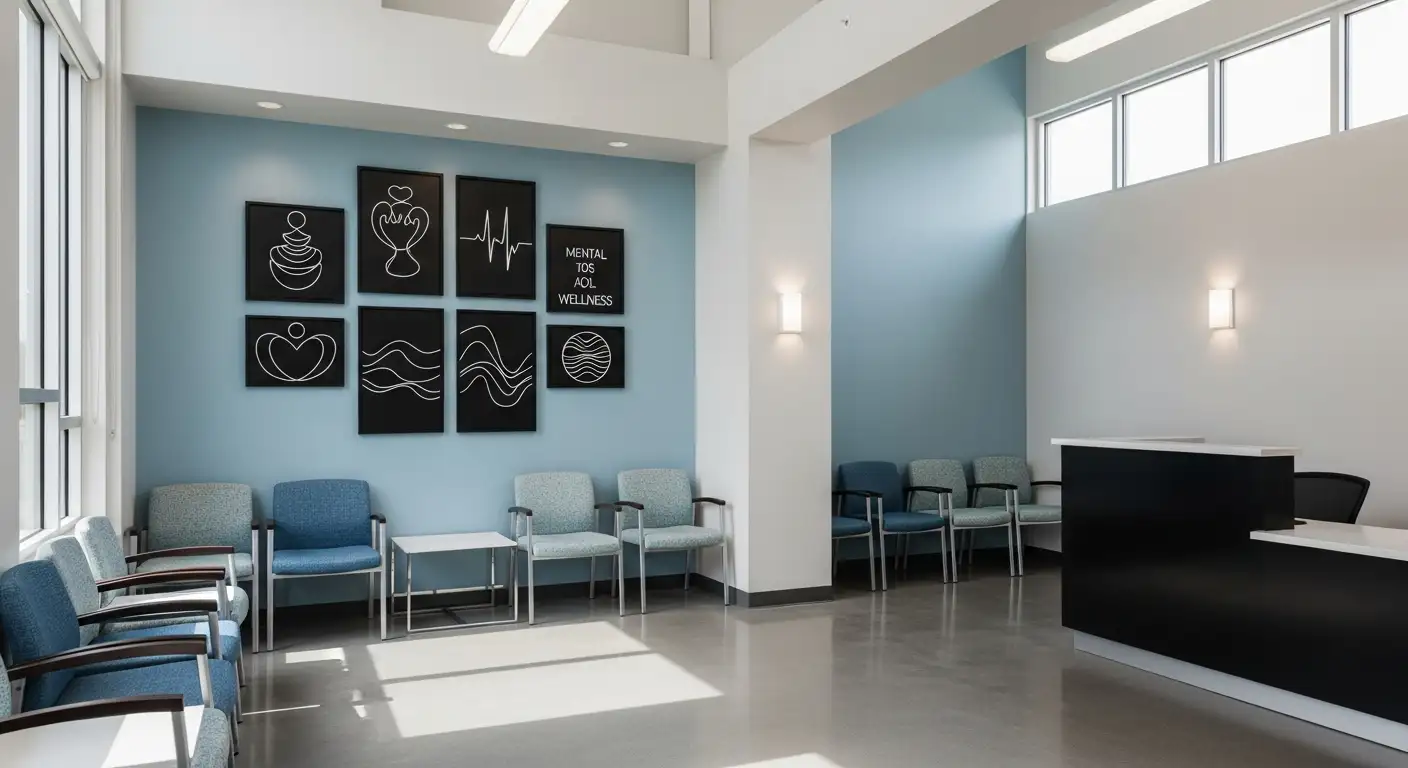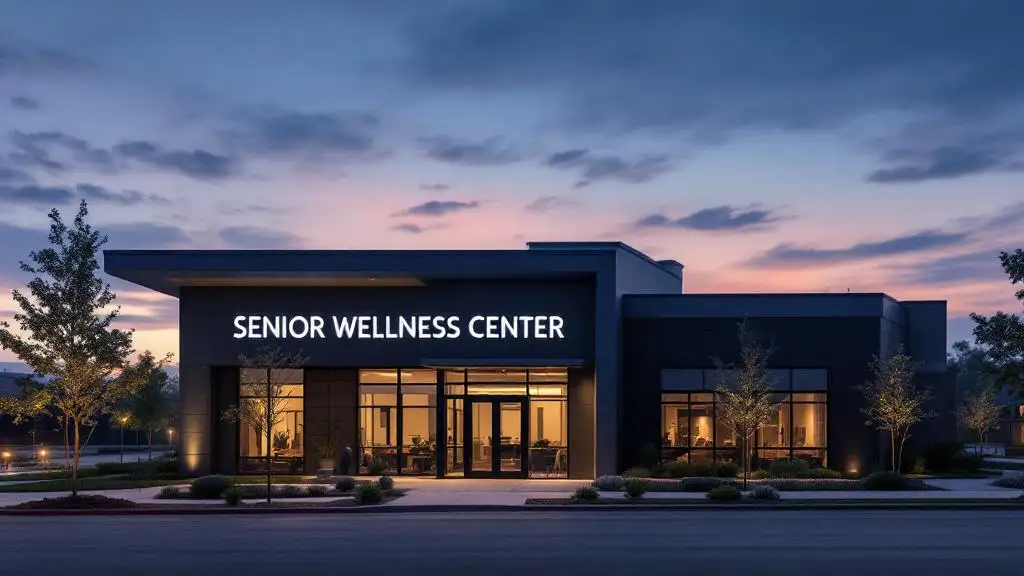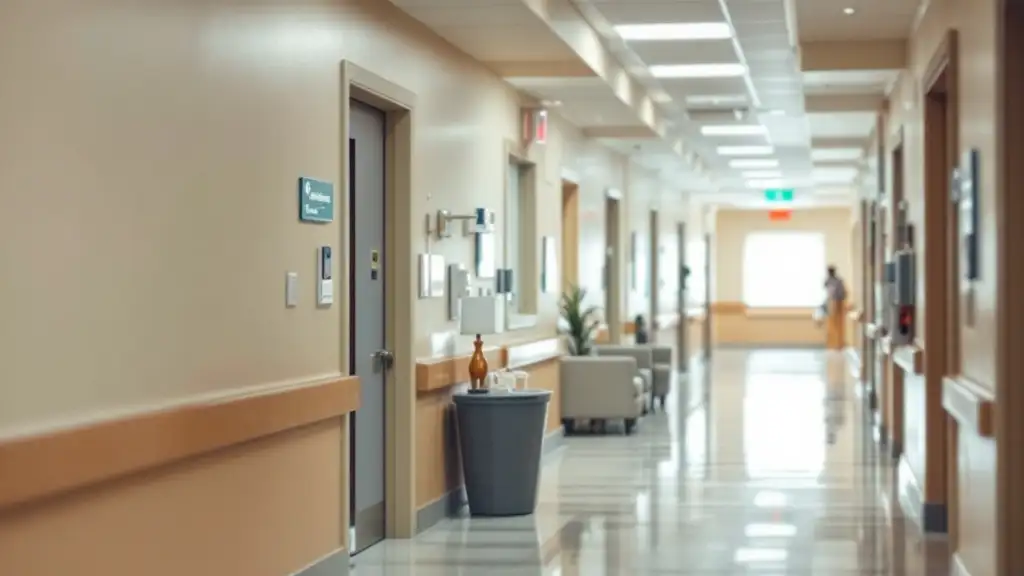Understanding the Importance of Psychological Red Flags in Care Facilities
Care facilities that provide treatment for substance abuse and mental health issues play a crucial role in the recovery and well-being of vulnerable populations. Early identification of psychological red flags by staff can significantly improve treatment outcomes by enabling timely interventions. This article explores essential psychological warning signs, effective monitoring techniques, and integrated treatment services designed to support individuals in care settings dealing with addiction and mental illness.
Comprehensive Treatment Services for Substance Abuse and Mental Health

What are comprehensive treatment services for substance abuse and mental health issues?
Comprehensive treatment services encompass a multidisciplinary approach that integrates medical care, psychological support, and social services tailored to each individual's needs. These services combine counseling, medication-assisted treatment (MAT), therapy, and rehabilitation programs to address the complexities of substance use disorders and co-occurring mental health conditions.
Community and statewide systems play a critical role by linking individuals to verified providers and diverse treatment options. Resources such as FindTreatment.gov guide users to available services, while hotlines including the 988 Suicide & Crisis Lifeline and the Disaster Distress Helpline offer confidential, immediate support during crises.
Prevention initiatives are also essential components, targeting youth and vulnerable populations to reduce new cases of substance misuse. Campaigns like Substance Use & Misuse Prevention Month and SAMHSA’s RecoverMe highlight early intervention strategies and promote awareness on risks and recovery.
Together, these elements form an integrated, holistic network designed to support recovery, reduce relapse, and foster well-being in communities especially affected by challenges such as homelessness, addiction, and mental illness.
Addressing Various Forms of Addiction in Treatment Programs

How do treatment programs address various forms of addiction?
Treatment programs utilize multidisciplinary approaches that combine medical, psychological, and social supports to address addiction comprehensively.
Behavioral therapies form a cornerstone of treatment, with cognitive-behavioral therapy (CBT) helping individuals recognize and change destructive thought patterns, motivational interviewing enhancing treatment motivation, and family therapy addressing relational dynamics to support recovery. These therapies often accompany counseling and support groups, creating a framework for sustained engagement and relapse prevention.
Medication-assisted treatments (MAT) such as methadone, buprenorphine, and naltrexone play a critical role by managing withdrawal symptoms and reducing cravings, allowing individuals to focus on behavioral and social aspects of recovery. Licensed professionals carefully tailor medication plans based on individual needs and addiction severity.
Programs vary in setting to best meet client needs. Outpatient treatment offers flexibility for those with less severe addiction or stable living situations. Inpatient and residential programs provide intensive support and supervision, ideal for severe addiction cases or co-occurring mental health issues.
Emphasizing early intervention and crisis management, initiatives often include screening for early warning signs and quick referral to appropriate services. Collaboration with community crisis resources ensures immediate support for individuals facing acute challenges.
By integrating therapies, medication, and flexible program settings, treatment addresses the complex nature of addiction. Tailoring these components to addiction severity and individual circumstances maximizes treatment effectiveness and supports long-term recovery.
Identifying Psychological Red Flags in Care Facilities
Early Warning Signs of Mental Illness
Detecting early warning signs of mental illness in care facilities is crucial for timely intervention. These subtle changes often precede diagnosable conditions and can allow staff to monitor and support residents more effectively.
Changes in Sleep and Appetite
Altered sleep patterns and appetite are common early indicators. Residents may experience insomnia or excessive sleeping and either a loss or increase in appetite, which can signal distress or emerging mental health concerns.
Mood Swings and Irritability
Frequent mood swings or increased irritability can suggest emotional instability. These fluctuations might be more pronounced than usual and impact interpersonal interactions and overall well-being.
Social Withdrawal and Decreased Functioning
A noticeable decline in social engagement, with residents withdrawing from group activities or isolating themselves, often accompanies mental health deterioration. Additionally, decreased functioning in daily tasks or job and school activities reflects declining mental health status.
Cognitive Issues: Concentration and Memory Deficits
Problems with concentration, memory lapses, and other cognitive difficulties serve as red flags. These may manifest as forgetfulness or confusion that interfere with routine activities or communication.
Unusual Behaviors and Feelings of Disconnection
Uncommon behaviors such as increased nervousness, illogical thinking, or reports of feeling disconnected from reality can indicate deeper psychological issues. Sensitivity to sensory stimuli and magical thinking fall under this category and warrant further evaluation.
Recognizing these signs helps care staff implement appropriate assessments and interventions, improving residents' quality of life and potentially preventing progression to serious mental illnesses.
The Role of Prescription Drug Monitoring Programs (PDMPs) in Detecting Risk
What Are Red Flags in PDMP Reports?
Prescription Drug Monitoring Programs track patients' controlled substance prescriptions to identify potential misuse. Common red flags include multiple prescribers and the use of several pharmacies, which may signal drug diversion or abuse.
How Common are Red Flags in Patient Encounters?
Studies found that approximately 20% of patient encounters reveal one or more PDMP red flags. This prevalence underscores the importance of PDMPs as tools to uncover risky prescribing and consumption patterns.
Which Patient Groups Show More Red Flags?
Patients with chronic pain conditions, addiction diagnoses, or opioid use histories are more likely to exhibit PDMP red flags. Additionally, those who do not adhere to their prescribed treatments tend to present more warning signs, indicating higher risk profiles.
How Do PDMP Red Flags Affect Prescribing Decisions?
The presence of red flags strongly influences clinician behavior. Providers often reduce the amount and dosage of opioid and controlled substance prescriptions when red flags are present. This cautious approach helps mitigate potential misuse and overdose risks.
What Role Does Provider Discretion Play?
Provider judgment is crucial in interpreting PDMP data. Discretionary checks often coincide with the detection of red flags, allowing clinicians to tailor treatment plans responsively. This individualized approach is essential for balancing effective pain management with abuse prevention.
PDMPs serve as invaluable tools within mental health and addiction treatment settings to identify dangerous prescription patterns and guide safer clinical decisions.
Integrating Data-Driven Quality Assurance and Staff Training
The Importance of Data Collection and Analysis
Data collection and analysis form the backbone of effective behavioral health care. By systematically gathering and examining data from diverse sources, care providers can identify trends, detect early warning signs, and tailor interventions to meet specific patient needs. This approach ensures continuous quality improvement and informs clinical decision-making, helping to close treatment gaps within vulnerable populations.
Evidence-Based Practices and Clinical Guidelines
Utilizing evidence-based practices (EBPs) and clinical guidelines is essential for delivering high-quality mental health and substance use disorder treatment. These practices are grounded in rigorous research and have demonstrated effectiveness across various settings. Providers are equipped with standardized protocols, such as medication-assisted treatment guidelines and integrated care models, to optimize outcomes.
Comprehensive Training Modules
Staff training is critical to the successful implementation of quality care. Training modules cover a range of topics including psychosis, depression, anxiety, and trauma. These modules emphasize person-centered approaches and teach care staff to recognize and manage complex co-occurring disorders. Regular training sessions also ensure staff stay updated on the latest evidence and therapeutic techniques.
Trauma-Informed Care and Stigma Reduction
Promoting trauma-informed care throughout behavioral health services helps address the root causes of mental health and substance use challenges. This approach fosters safety, trust, and empowerment among clients. Additionally, stigma reduction initiatives are integrated into care settings to improve client engagement, encourage treatment adherence, and support recovery in culturally sensitive ways.
Screening Tools and Behavioral Health Assessments
Screening tools such as the Behavioral Health Needs Assessment and the Geriatric Depression Scale aid in early identification of mental health concerns. These tools enable timely intervention and monitoring of patient progress. By incorporating standardized assessments, facilities can provide tailored treatment plans and improve overall patient outcomes.
By embedding data-driven quality assurance and comprehensive staff training into behavioral health programs, nursing facilities and treatment centers enhance service delivery, reduce risks, and promote recovery.
Utilizing Specialized Tools and Resources in Care Facilities
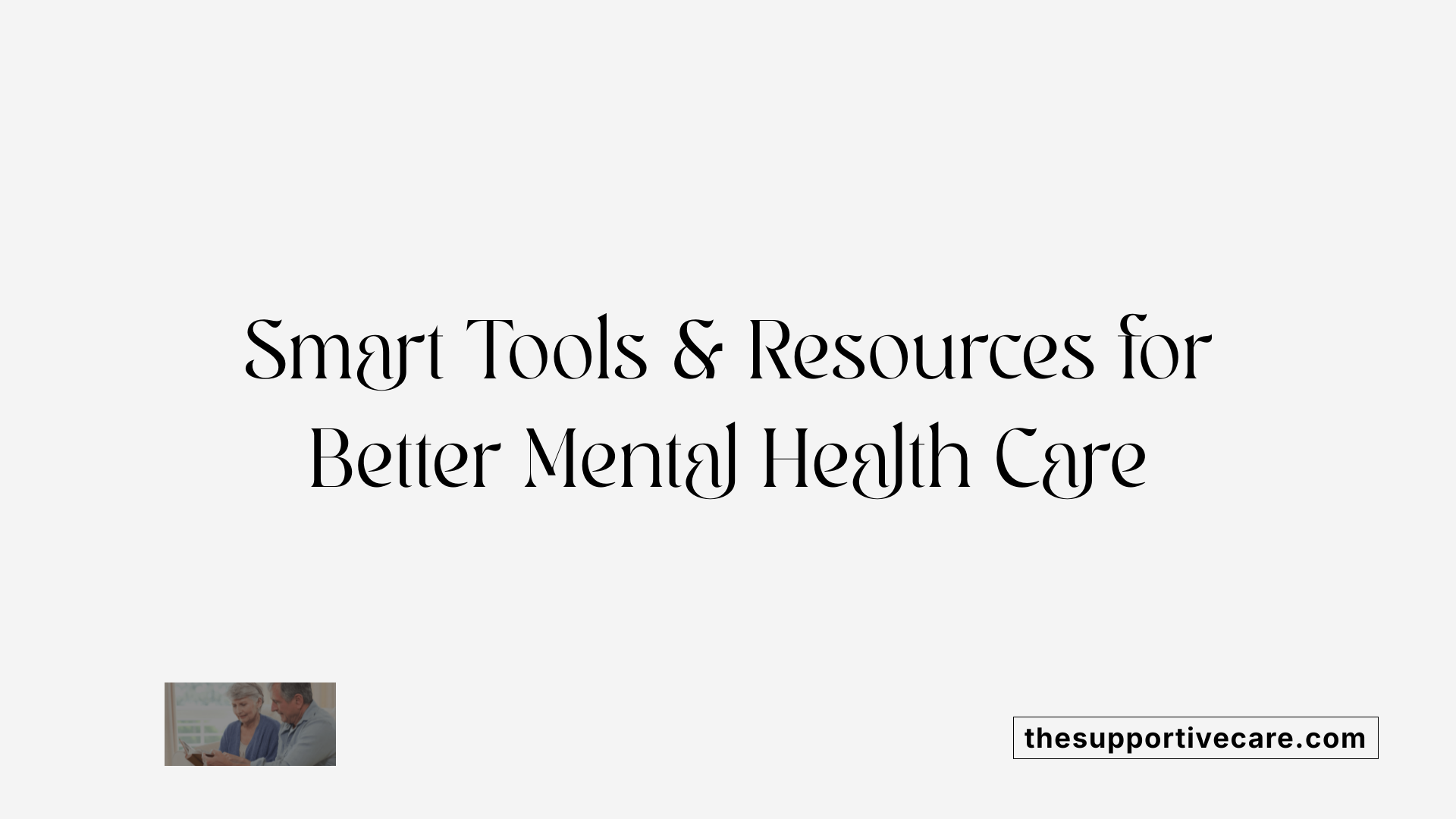
Behavioral Health Needs Assessment and Geriatric Depression Scale
Care facilities can enhance mental health outcomes by employing targeted assessment instruments like the Behavioral Health Needs Assessment and the Geriatric Depression Scale. These tools help identify residents experiencing mental health challenges, facilitating timely intervention and tailored care plans.
Case Studies and Toolkits for Mental Health Conditions
Comprehensive case studies and practical toolkits support staff in understanding complex mental health conditions such as schizophrenia, bipolar disorder, depression, and anxiety. These resources provide real-world examples and guidance, enabling better clinical decision-making and improved care quality.
Management of Co-Occurring Disorders
Addressing co-occurring mental health and substance use disorders requires integrated management strategies. Facilities are guided by evidence-based training modules that promote trauma-informed care, recognize the importance of non-pharmacological interventions, and incorporate recovery-focused approaches.
Promoting Person-Centered and Culturally Sensitive Care
Emphasis is placed on person-centered care that respects individual needs and cultural backgrounds. Training programs encourage reducing stigma, incorporating cultural sensitivity, and supporting recovery through personalized interventions tailored to each resident's unique circumstances.
Enhancing Behavioral Health in Long-Term Care
Efforts include data-driven quality assurance, continuous staff training, and community partnerships. These strategies collectively improve the behavioral health environment and ensure interventions are effective, compassionate, and aligned with best practices in mental health care for vulnerable populations.
Recognizing and Managing Safety Concerns in Treatment Settings
What are the primary safety concerns in treatment settings?
Treatment facilities face several safety challenges that can compromise both clients and staff. Key concerns include threats of violence and suicide risk, the presence of drug dealers or gang members, domestic violence issues, and clients arriving under the influence of substances.
How do threats of violence and suicide affect treatment environments?
Violence threats and suicide risks can create a stressful and unsafe atmosphere, impacting recovery. Facilities must implement crisis assessment protocols and offer immediate support via resources like the 988 Suicide & Crisis Lifeline to ensure clients receive prompt care.
What is the impact of the presence of drug dealers or gang members?
The involvement of drug dealers or gang members introduces illegal activities and intimidation, which undermine treatment goals. Vigilant monitoring and collaboration with community law enforcement help maintain a secure environment.
How are domestic violence issues addressed?
Domestic violence can exacerbate mental health and substance use disorders. Treatment programs integrate trauma-informed care practices and provide resources to safely support affected individuals while maintaining confidentiality.
What challenges arise when clients arrive under the influence?
Clients arriving intoxicated may exhibit unpredictable behaviors and pose risks to themselves and others. Staff employ evidence-based interventions, including motivational interviewing and flexible scheduling, to engage clients while maintaining safety.
How is confidentiality and privacy maintained despite safety issues?
Maintaining strict confidentiality is critical, even amid safety concerns. Treatment settings have established policies to handle inquiries and unsolicited information carefully, protecting client privacy while addressing safety threats.
Effective safety management in treatment settings relies on staff training, clear protocols, and community partnerships, ensuring supportive, secure environments conducive to recovery.
Relapse Prevention Strategies and Monitoring Indicators
What Are the Definitions of Lapse and Relapse?
In the context of substance use disorders, a lapse is described as a brief return to substance use without a complete loss of control. It is typically a one-time or short-term occurrence. On the other hand, a relapse refers to a prolonged return to substance use accompanied by a loss of control, signifying a return to problematic patterns that treatment aims to resolve.
How Does Education on Addiction and Recovery Contribute to Prevention?
Education plays a pivotal role by informing clients about the nature of addiction and the recovery process. Gaining a better understanding helps individuals recognize the challenges they face and the importance of adherence to treatment plans, which supports sustained recovery.
Why Is Early Assessment of Triggers Important?
Early assessment involves identifying personal and environmental factors that might prompt substance use. Recognizing these triggers early enables tailored intervention plans that target specific risk situations before they lead to relapse.
What Are Relapse Prevention Plans and Intensive Monitoring?
Relapse prevention plans are structured strategies developed collaboratively between clients and care providers. These include coping techniques, avoidance of known triggers, and support mechanisms. Intensive monitoring refers to ongoing supervision and check-ins to detect any signs of substance use early, allowing quick responses to prevent escalation.
How Are Slips and Relapses Reviewed?
Review procedures focus on understanding the circumstances and factors influencing a slip or relapse. This reflective process supports modifying treatment plans and honing preventive strategies. It includes intensified counseling, revisiting the relapse prevention plan, and sometimes increased monitoring.
Together, these strategies create a comprehensive framework to reduce the likelihood of relapse and support long-term recovery success.
Supporting Client Retention and Engagement

How Do Demographic Factors Influence Retention in Treatment?
Retention rates in addiction treatment programs tend to be higher among clients who are White, male, and employed. These demographic characteristics often correlate with greater stability and resources that facilitate continued engagement in treatment.
What Is the Impact of Marginalized Status and Family History on Retention?
Clients from marginalized backgrounds or those with a family history of substance abuse are more likely to drop out of treatment. Additional risks include lack of professional skills and recent hospitalization, which can complicate adherence and engagement.
How Do Motivational Interviewing and Flexible Scheduling Improve Retention?
Employing motivational interviewing techniques helps increase clients’ motivation and commitment to treatment. Coupling this with flexible scheduling accommodates clients’ work and social commitments, reducing barriers that typically hinder attendance and participation.
How Are Work and Social Life Challenges Addressed?
Treatment programs recognize that clients’ work schedules and social interactions often conflict with treatment demands. Services adapt by offering flexible appointment times and integrating social network management into recovery plans to support adherence.
Why Are Group Cohesion and Self-Help Practices Important?
Strong group cohesion, supportive rituals, and structured self-help practices within group therapy foster a sense of belonging and mutual encouragement. These elements contribute significantly to sustained recovery by enhancing client engagement, supervision, and ongoing support during treatment.
Community and Family Integration in Treatment Plans
How is Social Support Incorporated into Treatment Plans?
Incorporating social support networks is essential for effective substance use disorder treatment. Treatment plans actively integrate community and family support systems to create a comprehensive recovery environment. These networks provide emotional encouragement, accountability, and practical assistance that can reinforce positive behaviors and treatment adherence.
What Role Does Family Engagement Play in Recovery?
Engaging family members in recovery processes helps address the broader social context of substance use. Families are often educated about addiction, relapse prevention, and coping strategies, enabling them to offer informed support. Including family in treatment planning also helps resolve interpersonal conflicts and fosters communication, which are critical for sustained recovery.
How Are Substance Use Issues Addressed Within Social Contexts?
Substance use rarely occurs in isolation. Treatment acknowledges this by incorporating strategies that tackle triggers and influences found in clients’ social networks. Group therapy sessions emphasize group cohesion, rituals, and self-help practices to foster a sense of belonging and mutual support. Additionally, supervising clients' social interactions and creating safe social environments reduces exposure to negative influences like drug dealers or harmful peer groups.
How Is a Supportive Community Environment Fostered?
Creating a supportive community includes collaboration with local resources and by promoting non-pharmacological, trauma-informed care that encourages stigma reduction and cultural sensitivity. Flexible treatment scheduling considers clients’ work and social lives to improve adherence and retention. These efforts, combined with motivational interviewing and comprehensive planning, strengthen community ties and empower clients to sustain recovery in real-life settings.
Early Intervention Benefits and Impact on Mental Health Outcomes
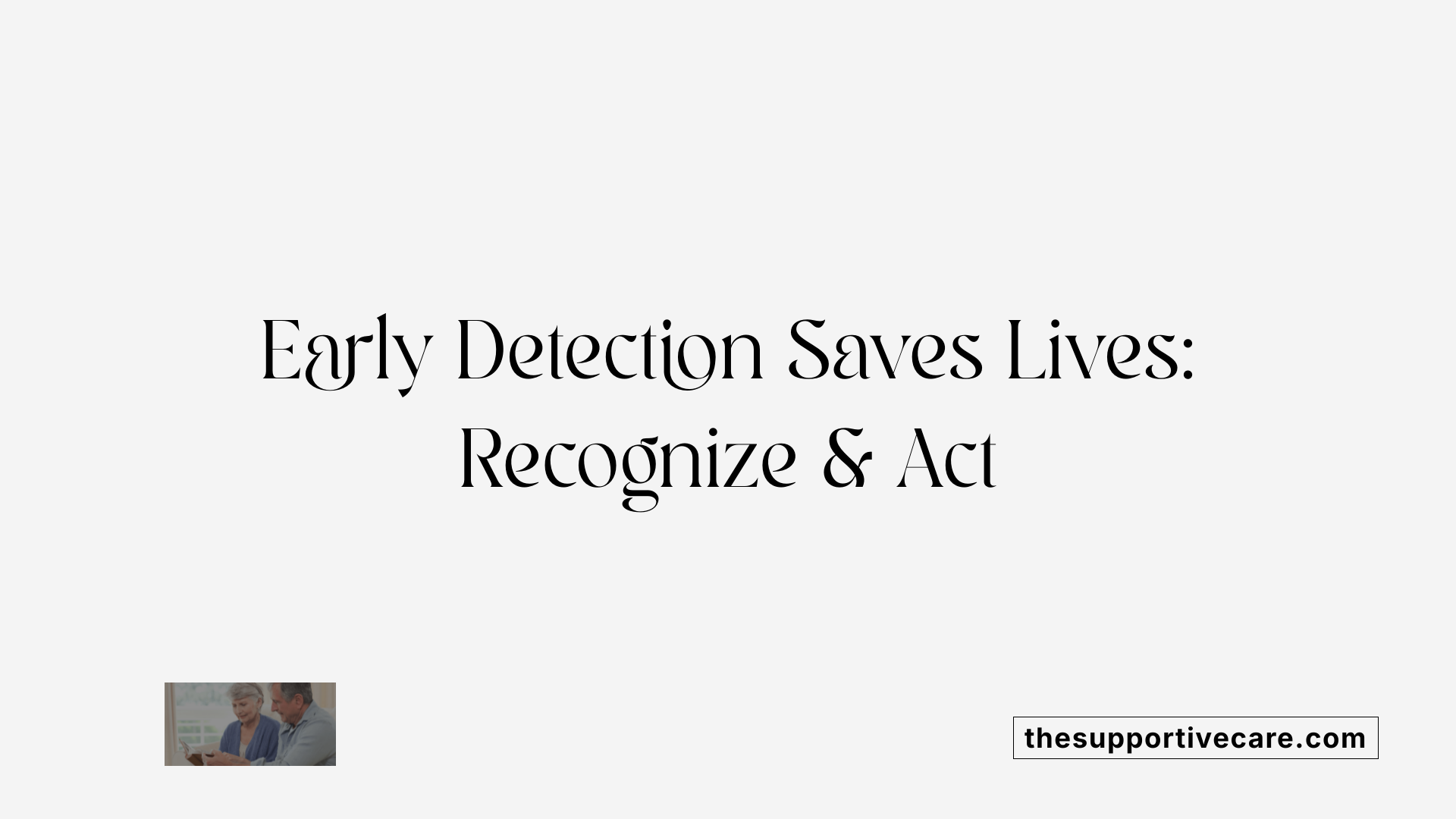
Gradual Onset of Serious Mental Illnesses
Most serious mental illnesses, like schizophrenia and bipolar disorder, develop gradually over time. Often, family members, friends, or the individuals themselves notice small changes before full symptoms emerge. These subtle early signs can include changes in mood, behavior, or cognitive function.
Importance of Early Detection by Family and Staff
Early detection of mental health issues is crucial and relies heavily on those close to the individual as well as care and treatment staff. Recognizing early warning signs such as sleep disturbances, mood swings, social withdrawal, or problems with concentration allows for timely assessment and intervention. In care settings, staff who are trained to monitor these signs can help identify needs promptly, facilitating earlier treatment.
Reducing Hospitalization and Improving Prognosis
Early intervention can significantly reduce the impact of mental illness on quality of life by delaying its progression or even preventing the onset of more severe symptoms. This proactive approach minimizes the likelihood of hospitalization and improves overall long-term prognosis. Early treatment supports better management of symptoms and can promote recovery or stabilization.
NSDUH Data on Treatment-Seeking Behavior
Insights from the 2024 National Survey on Drug Use and Health (NSDUH) highlight ongoing gaps between mental health conditions and treatment-seeking behavior among Americans. Understanding these patterns informs how early intervention initiatives can be designed to reach underserved groups, encouraging timely access to mental health services before crises develop.
SAMHSA’s Role and Initiatives Supporting Care Facilities
What funding initiatives support substance use and mental health projects?
SAMHSA has allocated substantial funding to tackle various challenges in mental health and substance use treatment. Notably, more than $1.5 billion was distributed in FY25 via State and Tribal Opioid Response grants, supporting comprehensive treatment services addressing the opioid crisis at multiple levels. Additionally, over $45 million was awarded to enhance sober housing services focusing on young adults, recognizing the vital role of recovery housing in treatment pathways.
What is the Hepatitis C Elimination Pilot?
Among SAMHSA’s innovative efforts is a $98 million Hepatitis C Elimination Initiative Pilot. This program targets communities disproportionately affected by homelessness, addiction, and mental illness. It promotes integrated health care approaches aimed at both treating and preventing Hepatitis C infections within these vulnerable populations, demonstrating a holistic model that interlinks infectious disease management with behavioral health services.
How do State and Tribal Opioid Response grants function?
The State and Tribal Opioid Response grants allocate resources to states and tribal organizations to increase access to evidence-based treatments, prevent opioid misuse, and reduce overdose deaths. These grants support a wide range of activities—from expanding medication-assisted treatment availability to community outreach and education—reinforcing SAMHSA’s commitment to reducing the opioid epidemic's impact on diverse communities.
What efforts support sober housing for young adults?
Recognizing young adults' unique needs in recovery, SAMHSA has funneled over $45 million toward sober housing services designed specifically for this group. This funding helps sustain environments that provide stability, peer support, and recovery-oriented living, which are essential parts of successful substance use recovery and long-term wellness.
How does SAMHSA promote evidence-based practices?
SAMHSA’s resource centers disseminate evidence-based practices (EBPs) across care settings, providing clinical guidelines, training modules, and implementation tools. These resources cover a variety of topics, including medication-assisted treatment, trauma-informed care, and integrated behavioral health strategies. By facilitating access to EBPs, SAMHSA supports care facilities in delivering high-quality interventions that improve patient outcomes.
| Initiative | Funding/Support Level | Focus Area |
|---|---|---|
| Hepatitis C Elimination Initiative | $98 million | Integrated health for homeless, addiction, and mental illness populations |
| State and Tribal Opioid Response | Over $1.5 billion (FY25) | Comprehensive opioid use disorder treatment and prevention |
| Sober Housing for Young Adults | More than $45 million | Recovery housing supporting young adult sobriety |
| Evidence-Based Practices Dissemination | Continuous support and resources | Clinical guidelines, training, and tools for behavioral health care |
Addressing Co-occurring Disorders with Integrated Care
What Screening and Management Strategies Are Effective for Co-occurring Disorders?
Integrated care for co-occurring mental health and substance use disorders starts with comprehensive screening and assessment. SAMHSA emphasizes using evidence-based practices to identify both mental health conditions and substance use issues simultaneously, enabling timely and tailored interventions. Management strategies often involve coordinated care planning that addresses these intertwined conditions holistically, ensuring that both disorders receive adequate attention.
How Are Medication-Assisted Treatments (MAT) Used in This Context?
Medication-assisted treatment is a cornerstone in addressing opioid use disorder alongside mental health challenges. SAMHSA offers detailed guidelines on using FDA-approved medications such as buprenorphine within integrated treatment plans. These guidelines support clinicians in safely combining pharmacological and psychosocial treatments to improve outcomes for individuals with co-occurring disorders.
Why Is Trauma-Informed and Culturally Sensitive Care Crucial?
Trauma-informed care is vital because many individuals with co-occurring disorders have histories of trauma that impact treatment engagement and recovery. SAMHSA advocates for care models that reduce stigma, respect cultural backgrounds, and incorporate non-pharmacological interventions. This approach fosters trust, increases retention in treatment, and supports recovery by addressing underlying trauma and diversity considerations effectively.
What Role Do Digital Therapeutics and Telehealth Play?
Digital therapeutics and telehealth have become essential tools in expanding access to behavioral health services. SAMHSA resources highlight the use of telehealth for delivering counseling, medication management, and recovery support, especially in underserved or rural areas. These technologies make integrated care more accessible and help maintain continuity of care, overcoming barriers such as transportation and stigma.
| Aspect | Description | SAMHSA Resource Highlights |
|---|---|---|
| Screening & Assessment | Simultaneous identification of mental health and substance use | Evidence-based tools and clinical guidelines |
| Medication-Assisted Treatment | Use of FDA-approved medications for opioid use disorder | Buprenorphine guidelines integrated with psychosocial care |
| Trauma-Informed & Cultural Care | Emphasis on reducing stigma and addressing trauma | Training modules, non-pharmacological approaches |
| Digital Therapeutics & Telehealth | Remote delivery of services to increase access and engagement | Telehealth protocols and digital intervention programs |
Preventing Substance Use Initiation and Misuse in Vulnerable Populations
Prevention Campaigns such as Substance Use & Misuse Prevention Month
Prevention efforts play a vital role in curbing substance use initiation and its progression, especially in communities facing vulnerabilities. Substance Use & Misuse Prevention Month spearheads awareness and education campaigns aimed at reducing risks before substance use begins. These initiatives focus on early intervention and provide resources to support healthy decision-making.
Targeting Youth and Young Adults with Disabilities
Youth and young adults, including those with disabilities, are a critical focus group for prevention programs. Tailored prevention strategies address the unique challenges faced by these populations, offering accessible and effective support. Programs incorporate evidence-based practices that cater to diverse needs, promoting resilience and healthy coping mechanisms to deter substance misuse.
Addressing Homelessness and Mental Illness
Holistic approaches are essential when addressing substance use in individuals experiencing homelessness and mental illness. The Hepatitis C Elimination Initiative Pilot, funded by SAMHSA, exemplifies integrated health strategies that combine addiction treatment and mental health care with housing support. This comprehensive model improves access and outcomes for severely affected communities.
Community Resources Linking and Support
Effective prevention is enhanced through collaboration with community resources that offer accessible and immediate support. Platforms like FindTreatment.gov, the 988 Suicide & Crisis Lifeline, and the Disaster Distress Helpline offer confidential assistance for individuals at risk. These connections help bridge gaps in care, ensuring timely intervention and sustained support for vulnerable populations.
Enhancing Care Through Vigilance and Comprehensive Support
Effective monitoring of psychological red flags in care facilities is paramount to improving treatment outcomes for individuals with substance abuse and mental health challenges. By leveraging comprehensive treatment services, integrating evidence-based practices, and utilizing tools like PDMP data and specialized assessments, staff can identify early warning signs and respond appropriately. Coupled with supportive community resources, relapse prevention planning, and tailored interventions, these strategies foster safer, more effective care environments. Continuous staff training and collaboration with initiatives like those provided by SAMHSA ensure that care facilities remain equipped to address evolving challenges, ultimately promoting recovery and well-being for vulnerable populations.
References
- Home | SAMHSA - Substance Abuse and Mental Health ...
- Characteristics and Red Flag Correlates of Psychiatric ...
- Warning Signs of Mental Illness
- Resources - COE-NF
- Chapter 7. Clinical Issues, Challenges, and Strategies ... - NCBI
- Evidence-Based Practices Resource Center
- Substance Abuse and Mental Health
- Home | SAMHSA - Substance Abuse and Mental Health ...













